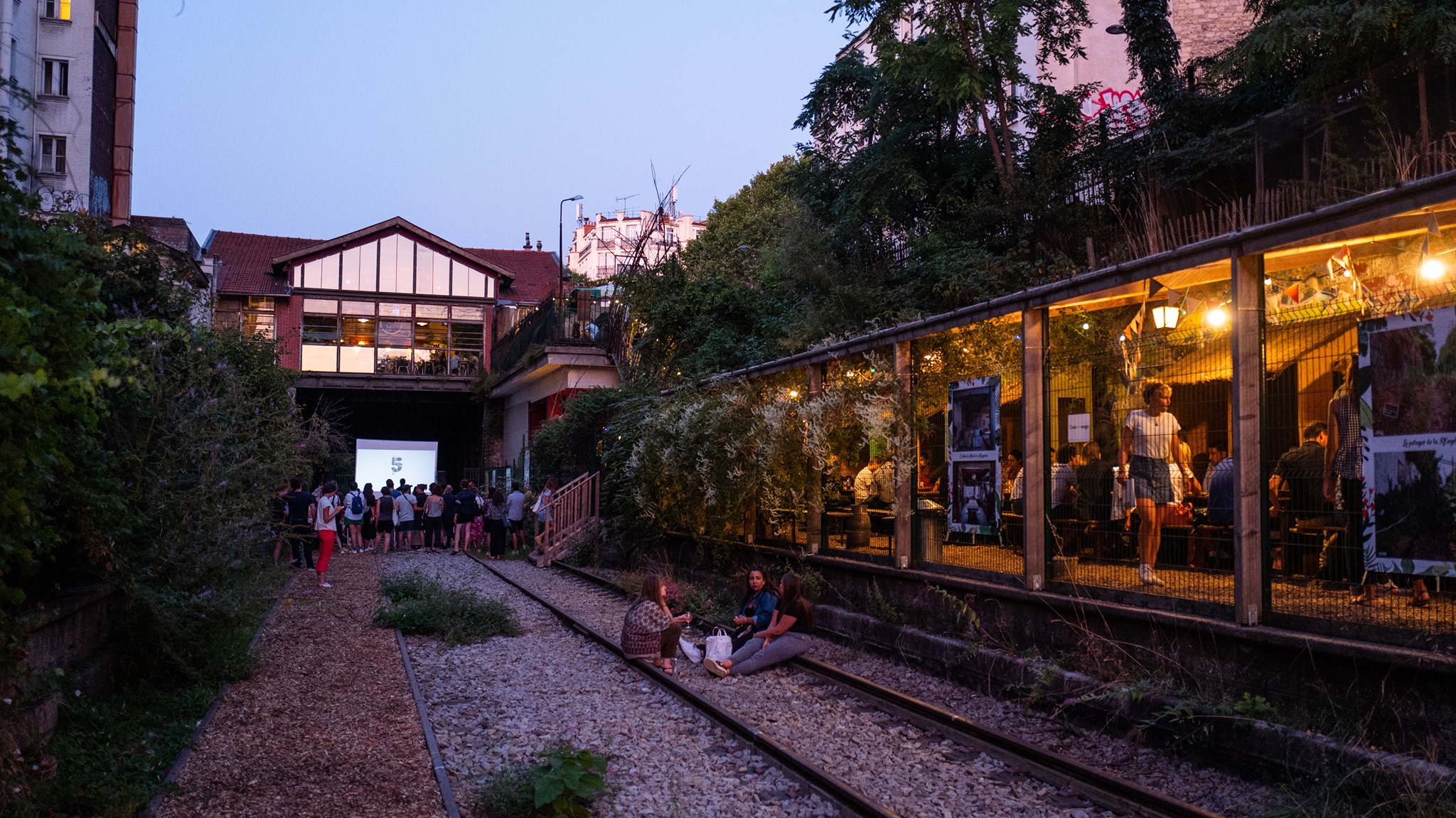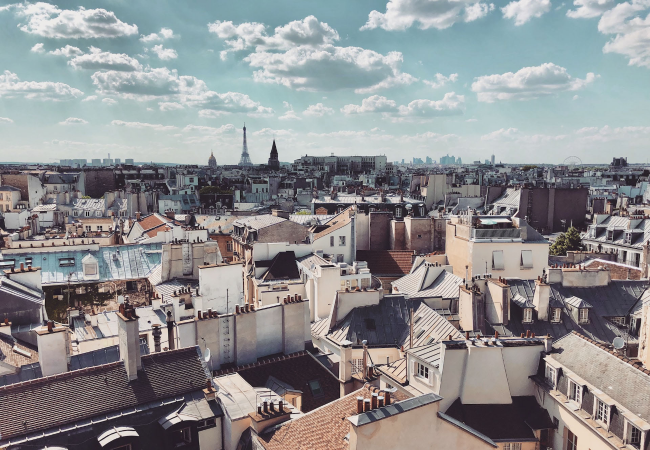Two Faced: The Charm of Repurposed Buildings in Paris
- SUBSCRIBE
- ALREADY SUBSCRIBED?
BECOME A BONJOUR PARIS MEMBER
Gain full access to our collection of over 5,000 articles and bring the City of Light into your life. Just 60 USD per year.
Find out why you should become a member here.
Sign in
Fill in your credentials below.
The idea of repurposing antiquated buildings in a city may seem somewhat callous – somewhere, a city planner must decide on behalf of their regional metropolis that the building’s original purpose is redundant. It’s a decision driven by several concerns and postulations. Modernization and industrialization are arguably the biggest drivers of change which tend to signal that the technology has advanced more quickly than the buildings are designed to withstand. Our shifting criteria for what we deem an aesthetically pleasing building is another motivation for bringing about change – albeit this is arguably a more superficial reason which indulges in our discerning eye for our subjective standards of beauty.
Nevertheless, rethinking the purpose of a building seems less ruthless then demolishing it altogether. Urban enthusiasts might even postulate that it gives a city a fresh look – a new identity, though the foundations of the building remain identical, bound up in the history of our ancestors. The repurposing of our urban edifices offers a city a second lease of life while preserving the vestiges of the pre-modern era. It gives tourists an excuse to revisit that city – and gives locals a renewed appreciation of their neighborhood that is adaptable to the changing social and political space around them.

Musée des Arts et Métiers. Photo credit: Arnaud 25 / Wikimedia commons
Paris has had its fair share of medieval revamps. With the enviable cultural accolade of the world’s museum capital boasting a staggering 130 different exhibition spaces – a large portion of the French capital’s museums started off their lives playing an alternative role within city life. The Musée des Arts et Métiers, for example, started off as a Romanesque-Gothic church and monastery which was renovated in the late 1900s and now functions as a repository of industrial inventions. The Musée de Cluny was a gothic mansion dating back to the 15th century and the townhouse of the Abbot of Cluny. Today it houses an impressive medieval art collection. In this way, the city’s museums are not just guardians of relics, but relics in and of themselves. Here are my picks of the French capital’s most characterful repurposed buildings.

Musée de Cluny – musée national du Moyen Âge © Alexis Paoli, OPPIC
1. Musée d’Orsay
Perhaps the best-known is the Musée d’Orsay, an unmistakably imposing building which adorns a decent stretch of Paris’s Left Bank. Until 1939, however, the museum space was a Beaux-Arts style railway station, the Gare d’Orsay, designed by French architect Victor Laloux in 1900. An avant garde symbol of locomotive prowess, the gare was the first of its kind designed for electrically powered trains. But the technology soon overtook it, and the short platforms became unsuitable for the increasingly longer trains. The station began to only serve the Parisian banlieues and was eventually decommissioned.
During World War II, the industrial site played a variety of intermediary roles including a mail center and a film set, before a trio of architects won the contract in 1979, allowing them to turn the station into a museum. Today, the giant clock face with views out onto the Seine is the only remnant of the museum’s past. Inaugurated in December 1986 by then president François Mitterand, today the Musée d’Orsay houses the world’s richest collection of Impressionist paintings, featuring artists such as Cézanne, Delacroix and Degas, as well as a vast collection of sculptures and photography. The Orsay is an incredibly popular museum; although the purpose of the building has changed entirely, its appeal has only been heightened.

Paris Musee d’Orsay. Credit: © Herbert Frank/ Flickr
2. La Recyclerie
As hinted in its name, La Recyclerie is a quirky hub of environmental activity, housed in the former Ornano station, just around the corner from the Porte de Saint-Ouen flea market. The center straddles La Petite Ceinture, a circular railway which formed an arc around the northern part of Paris. The railway line initially only served freight travel, but later expanded to passengers before the metro network expanded. This rendered the original line obsolete; it had been built for a city which then expanded twofold in Baron Haussmann’s urban renovation of the city. Some of the lines were repurposed for the RER C line and the rest were either sold off or repurposed.
Although La Recyclerie is now a lively canteen, garden and recycling hub, it still has an industrial feel to it. This is thanks to the rusty railway tracks which have been turned into a garden and a ferme urbaine inhabited by free range chickens, ducks, bees and insects which nourish the outskirts of the city with biodiversity. The ducks get the customers’ leftover crusts, and the dishes – half of which are vegetarian – are made from the seasonal produce prepared on site each day. It’s simple, humble eating with a solid bucolic ethos behind it. The décor is eclectic with mismatched furniture which gives the interior something of a homely feel – it’s precisely the no frills element of La Recyclerie which makes it so effortlessly charming.

courtesy of La REcyclerie/ Facebook
3. La Conciergerie
The name of the medieval building located on the Île de la Cité comes from its origins as a prison, where round-the-clock surveillance was mandatory. The isolated nature of Paris’s island also offered additional protection from enemies. The building was originally known as the Palais de la Cité, where the Kings of France resided from the sixth century until the 14th. But ultimately, it’s a site that’s become synonymous with the French Revolution when 2780 prisoners – including Marie Antoinette – were imprisoned. The violent regime, aptly known as The Reign of Terror, followed the creation of France’s First Republic in 1792.
Nowadays, however, the sand-colored bricks and black gothic turrets are a national monument and museum space. Its mighty premises look architecturally majestic but seem macabre considering its original purpose.
Top tip: if you’re visiting the Conciergerie, be sure to pay a visit to the nearby Sainte-Chapelle, where the kaleidoscopic effect of 1,113 stained glass windows will mesmerize even the agnostics among us.

La Conciergerie. Photo credit: xandru/ Wikimedia Commons
Lead photo credit : Photo by Mihail Ribkin on Unsplash
More in architecture, Conciergerie, la recyclerie, Musée d’Orsay, Repurposed buildings




